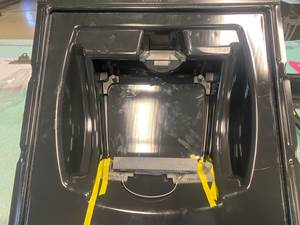Machine Safety Is a Moving Target
Plastics Unlimited
Plastics processors and other manufacturers have to keep up with a lot of new federal, state, and local regulations on all sorts of subjects—taxes, health insurance, environmental protection, and lots more, not the least of which is worker safety.
Plastics processors and other manufacturers have to keep up with a lot of new federal, state, and local regulations on all sorts of subjects—taxes, health insurance, environmental protection, and lots more, not the least of which is worker safety. Last year brought a significant new regulation from the Occupational Safety and Health Administration (OSHA), which adopted the ISO 13849-1 international safety standard, which relates to machine guarding.
As a result, U.S. manufacturers of all types need to evaluate their machine safety provisions. Old OSHA evaluation parameters such as Category 1-4 classification (EN 954-1) are phased out and new ones like PL (Performance Level) a through e became the basis for machine guarding and hazard mitigation. The new standards take into account such factors as the probability of a hazard occurring, the frequency of an operator being in a potentially hazardous situation, and the severity of possible injuries. This is explained in a chart on the OSHA website. According to safety consultants, the incorporation of the new probabilistic, qualitative approaches with the previous deterministic concepts will force many small manufacturers to retrofit safety enclosures into work stations that didn’t previously require them.
That was the case for Plastics Unlimited in Preston, Iowa, which produces custom thermoformed and cast urethane parts for agricultural equipment OEMs like John Deere and Bobcat. Plastics Unlimited was started in 1993 by Terry and Nancy Kieffer. Their 67,750 ft2 plant employs 70 and has five single-station, double-ender, and rotary thermoformers for sheet gauges from 60 to 400 mils. Among their busiest machines are two five-axis Thermwood CNC routers. Since this equipment is programmed to operate automatically, it did not require safety enclosures under the old rules.But the new standard’s broader hazard evaluation/mitigation criteria means router stations like these now need protective enclosures.
Plastics Unlimited president Terry Kiefer was alerted to the new requirement last spring by an OSHA inspector who visited for a “walk-through,” Kieffer says, because plastics facilities are one manufacturing sector being targeted by OSHA for tighter scrutiny. Kieffer had operational as well as regulatory concerns about retrofitting new guarding in a busy plant with limited floor space: “I was worried about the router enclosure because we couldn’t increase the footprint of the work station, so it required a custom design.” He was also concerned about cost and downtime for the installation.
Kieffer contacted Drew Beck, regional sales manager for Frommelt Safety Products, a Milwaukee-based manufacturer of machine guarding that used some of Plastics Unlimited’s parts. Beck suggested enclosing the routers with eight-gauge steel-wire Roboguard fencing, covered with clear Saf-T-Vu fabric, which is designed to contain hazards such as weld flash, sparks, smoke, and flying debris.
Access to the workspace was guarded by twin Slimline Automated Barrier Doors, which open by rolling upward, rather than swinging outward, minimizing footprint. In this case, they incorporate a large, 80-mil clear PVC window, so employees can monitor the work area from outside. The doors are tied into the PLC controls of the router, so it cannot operate with the door open.
Mechanical installation of the doors and fencing took a couple of hours, and the electrical hookups took a few more hours. “We are very pleased with the way this turned out,” says Kieffer. “Although we’ve never had a router accident, employee safety is very important to us. Additionally, the Slimline door looks very modern and professional and we appreciate the noise buffer the enclosure provides—two side benefits we didn’t anticipate.” The new safety guarding cost about $12,000 per machine.
Beck’s firm is working with many manufacturers, including a growing number of plastics processors, for which the new guarding rules are an issue. “Stricter rules are impacting equipment that may formerly have been exempt,” he notes.
Related Content
Thermoformer Maximizes Productivity with 3D Printing
Productive Plastics has created an extensive collection of 3D printed manufacturing aids that sharply reduce lead times.
Read MoreAmcor, Berry Merge in All-Stock Deal
Move unites two complementary businesses to create a global leader in consumer packaging.
Read MoreOMV Technologies Gets New CEO
Kooper brings 33 years of experience in the industrial and consumer packaging industries to OMV--the closed-loop, turnkey, inline extrusion, thermoforming and tooling systems manufacturer.
Read MoreOrigin Materials Unveils CapFormer for Producing PET Caps
Factory acceptance test completed at commercial scale.
Read MoreRead Next
Lead the Conversation, Change the Conversation
Coverage of single-use plastics can be both misleading and demoralizing. Here are 10 tips for changing the perception of the plastics industry at your company and in your community.
Read MoreSee Recyclers Close the Loop on Trade Show Production Scrap at NPE2024
A collaboration between show organizer PLASTICS, recycler CPR and size reduction experts WEIMA and Conair recovered and recycled all production scrap at NPE2024.
Read More












